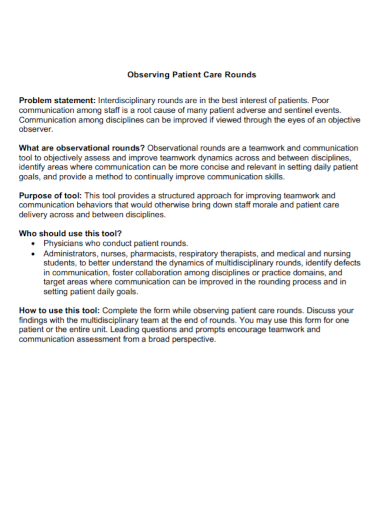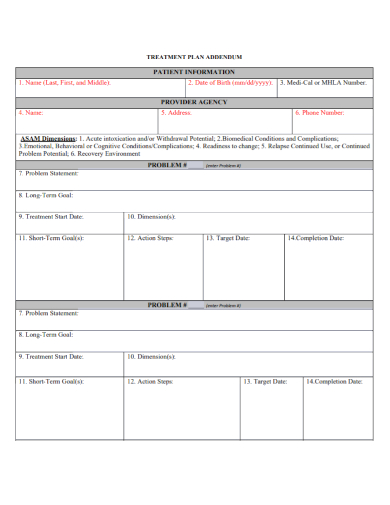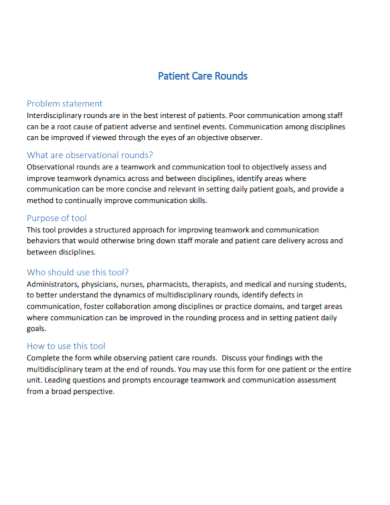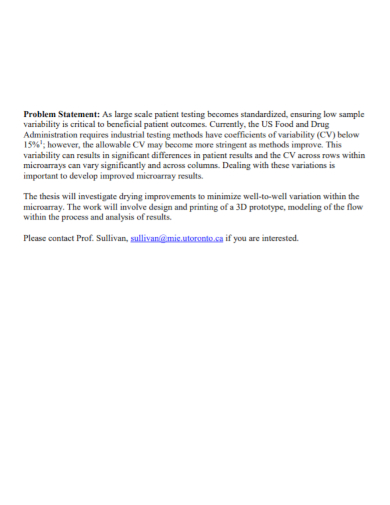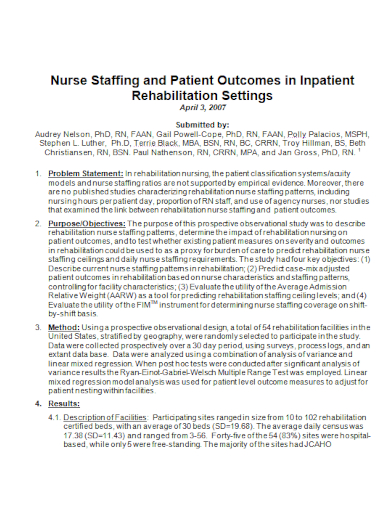To help patients know and understand their medical condition, physicians conduct a series of examinations, tests, and interviews to determine any medical issues that the patient is suffering from. This will help the physicians to diagnose a patient of the problem, and thus creating a problem statement that signifies the actual medical problem of the patient to be used as a basis to treat their problem. If you’re a medical student who is learning how to make a problem statement, this article is for you. Keep reading the article to find out how to create a patient problem statement.
7+ Patient Problem Statement Samples
1. Patient Safety Problem Statement
2. Patient Care Analysis Problem Statement
3. Patient Care Observation Problem Statement
4. Patient Treatment Problem Statement
5. Patient Care Problem Statement
6. Patient Testing Problem Statement
7. Nursing Patient Problem Statement
8. Patient Outcome Problem Statement
What is a Problem Statement?
A problem statement is one or two sentences that identify and summarize a condition, problem, or issue of a patient that is dealing with currently. Diagnostic reasoning is a skill that physicians use to understand a patient’s complaints and symptoms and then to identify possible diagnoses that are related to the complaints.
How to Write Problem Statement
1. Answer the Questions Relevant to the Problem
To write a problem statement, first, you need to answer the following questions using the 5 Ws and 1 H tool (what, where, why, when, who, and how). Develop one or two sentences statement from the answers. Refer to the guide questions below to help you answer the questions to make the problem statement.
- What is the problem?
- Who does this affect?
- How does this problem make you feel?
- When is it a problem?
- What should I care about?
- Where are the problem areas?
2. List and Map the Causes of the Health Problem
When diagnosing a patient, consider the following factors that cause the problem:
- genetic or biological factors
- psychological factors
- behavior
- physical and social environment factors
Weigh the factors and determine which ones are the primary and secondary factors. Once you determine them, the primary factors are the ones that you should focus on to be able to come up with the stated problem.
3. Conduct a SWOT Analysis
The SWOT (Strengths, Weaknesses, Opportunities, and Threats) tool is a type of analysis that can help assess the factors mentioned above. It could help you come up with a better problem statement that focuses on the main problem of the patient. The SWOT analysis can be used to help you in your next step which is trying to solve the patient’s actual and main problem.
4. Write the Draft
Once you’ve made your analysis, it’s time to write the draft of your problem statement. The first thing you will write is to describe the current state of the patient using the information you’ve gathered. The next thing is to include a reason (still based on the information you’ve gathered) as to why the patient is going through that problem, or any underlying medical or health causes that the patient has that resulted in their current problem. Focus on one problem at a time. Don’t consolidate them all together. The reason for this is to avoid confusion and misdiagnosing the patient.
FAQs
What is clinical treatment?
Clinical treatment focuses on the mental and emotional aspects of a person’s illness, injuries, or addiction to integrate it into therapy and counseling into a broader treatment plan.
How do you describe a clinical setting?
A clinical setting means a hospital, therapy facility, outpatient facility, or clinic whose primary purpose is medicine, rehabilitation, or wellness. It is a location where the primary purpose is the delivery of behavioral health care to clients and patients.
What are the different types of clinical treatment?
There are a lot of different types of clinical treatments. Some popular clinical treatments are psychotherapy, psychodynamic therapy, humanistic therapy, cognitive behavioral therapy, family systems therapy, writing, art, and music therapy, group therapy recreational therapy, fitness therapy, 12-step support groups, and physical therapy.
Some takeaway tips to guide you on writing an efficient problem statement is to always remember to look for problems first from your patient before coming up with a solution. You will only do that once you’ve completed the problem statement. Make sure your statement is brief. Keep it to one or two sentences. So make sure to state the problem right away. To help you get started on writing the problem statement, download our free sample templates provided above to serve as your guide!
Related Posts
FREE 10+ Medical Problem Statement Samples [ Surgical, Nursing, Management ]
FREE 10+ Payoff Statement Samples in PDF | DOC
FREE 10+ Scholarship Statement of Purpose Samples in PDF | DOC
FREE 10+ Engineering Problem Statement Samples [ Software, Mechanical, Civil ]
FREE 30+ Information Statement Samples in PDF | MS Word
FREE 50+ Policy Statement Samples in MS Word | Google Docs | PDF
FREE 50+ Summary Statement Samples in PDF | MS Word
FREE 10+ Nursing School Personal Statement in PDF
FREE 9+ Mortgage Statement Samples and Templates in PDF
FREE 10+ Independent Subcontractor Statement Samples in MS Word | Google Docs | Apple Pages | PDF
FREE 10+ Trust Distribution Statement Samples in PDF
FREE 14+ Compliance Statement Samples & Templates in PDF | MS Word
FREE 10+ Extension Impact Statement Samples in PDF | DOC
FREE 10+ Bank Reconciliation Statement Samples and Templates in PDF | MS Word
FREE 10+ Diversity Mission Statement Samples in MS Word | PDF



